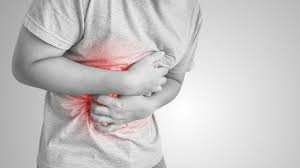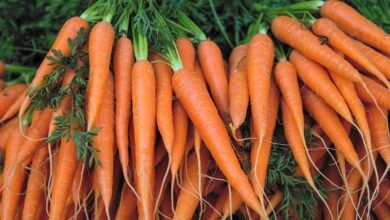The Best Workouts for Fat Loss & Muscle Gain
The best workouts for fat loss & muscle gain are those that effectively combine strength training and cardiovascular exercise

The best workouts for fat loss & muscle gain are those that effectively combine strength training and cardiovascular exercise while optimizing recovery and nutrition. Achieving both goals simultaneously requires a strategic approach that maximizes calorie burn while stimulating muscle growth. Many people struggle to balance their workouts, either focusing too much on cardio and losing muscle mass or lifting weights without addressing fat loss. However, with the right training plan, it is entirely possible to build a strong, lean physique while shedding excess body fat.
Combining resistance training with high-intensity interval training (HIIT), compound exercises, and progressive overload techniques ensures efficient fat burning and muscle development. The synergy between these methods helps in boosting metabolism, increasing strength, and enhancing overall body composition. This article explores the best workout strategies to achieve both fat loss and muscle gain, covering key training principles, effective workout structures, and the role of diet and recovery in optimizing results.
Strength Training for Muscle Gain and Fat Loss
Strength training is essential for anyone looking to build muscle while losing fat. It not only enhances muscle definition but also contributes to fat loss by increasing metabolic rate. Unlike steady-state cardio, strength training promotes the afterburn effect, where the body continues to burn calories even after the workout ends. Resistance training also preserves lean muscle mass, which is crucial when in a calorie deficit for fat loss.
The best approach to strength training involves compound movements that engage multiple muscle groups simultaneously. Exercises such as squats, deadlifts, bench presses, and rows recruit several muscles, leading to higher calorie expenditure. Full-body strength workouts, performed 3–4 times a week, provide optimal results by ensuring all major muscle groups are stimulated consistently.
Another critical principle in strength training is progressive overload. Increasing the weight, repetitions, or intensity over time forces muscles to adapt, leading to continuous growth. Combining heavy lifting with moderate to high reps enhances both strength and muscular endurance. Additionally, incorporating supersets and circuit training can elevate heart rate, making strength training more efficient for fat loss.
High-Intensity Interval Training (HIIT) for Maximum Fat Burn
HIIT workouts are one of the most effective strategies for burning fat while preserving muscle mass. Unlike traditional steady-state cardio, HIIT involves alternating between short bursts of intense activity and brief recovery periods. This method maximizes calorie burn during and after the workout, thanks to excess post-exercise oxygen consumption (EPOC), also known as the afterburn effect.
A typical HIIT session can range from 15 to 30 minutes and can include exercises such as sprinting, burpees, jump squats, and kettlebell swings. The short duration makes HIIT an efficient option for those with busy schedules while still delivering significant fat-burning benefits. Since HIIT places stress on the muscles, it helps in maintaining and even building muscle mass while shedding fat.
HIIT can be incorporated into resistance training sessions by performing exercises in quick succession with minimal rest. For example, a circuit consisting of squats, push-ups, kettlebell swings, and battle ropes can serve as a full-body metabolic conditioning workout. This blend of cardio and resistance training ensures that both fat loss and muscle development occur simultaneously.
The Role of Compound Exercises in Fat Loss and Muscle Gain
Compound exercises are multi-joint movements that work multiple muscle groups at once, making them highly effective for those aiming to lose fat while gaining muscle. Unlike isolation exercises that target a single muscle, compound movements increase energy expenditure and build functional strength.
Deadlifts, squats, overhead presses, pull-ups, and bench presses are some of the most effective compound exercises. These movements require significant effort, leading to increased calorie burn and muscle activation. Because compound exercises mimic real-life movements, they also improve athletic performance and overall functional fitness.
Incorporating compound lifts into a workout routine ensures that more muscle fibers are engaged, resulting in greater hormonal responses such as increased testosterone and growth hormone production. These hormones play a crucial role in muscle growth and fat metabolism. A well-structured training plan should prioritize these exercises while balancing volume and intensity to avoid overtraining.
The Importance of Recovery and Nutrition
Recovery is often overlooked but is a critical component of achieving fat loss and muscle gain. Without adequate rest, muscle growth and repair are hindered, leading to stagnation in progress. Proper sleep, hydration, and active recovery techniques such as stretching and foam rolling help optimize performance and prevent injuries.
Nutrition is equally important in this process. To lose fat while building muscle, one must maintain a slight calorie deficit while consuming enough protein to support muscle repair. Lean protein sources such as chicken, fish, eggs, tofu, and legumes should be staples in the diet. Healthy fats from sources like avocados, nuts, and olive oil support hormone production, while complex carbohydrates provide energy for workouts.
Meal timing can also influence results. Consuming protein and carbohydrates post-workout aids in muscle recovery and glycogen replenishment. Additionally, staying hydrated and managing stress levels contribute to overall metabolic health, ensuring the body efficiently burns fat while preserving lean muscle.
Workout Plan for Fat Loss and Muscle Gain
An effective training plan should incorporate both resistance training and cardio to maximize results. A weekly routine may look like this:
Day 1: Full-Body Strength Training
Squats, deadlifts, bench press, pull-ups, and core work
Day 2: HIIT and Core
Sprint intervals, burpees, kettlebell swings, planks, and Russian twists
Day 3: Upper-Body Strength Training
Overhead press, rows, dips, bicep curls, and triceps extensions
Day 4: Rest or Active Recovery
Yoga, stretching, or light walking
Day 5: Lower-Body Strength Training
Lunges, Romanian deadlifts, calf raises, and glute bridges
Day 6: HIIT and Conditioning
Jump squats, medicine ball slams, rope jumps, and sled pushes
Day 7: Rest or Mobility Work
Foam rolling, flexibility drills, or light swimming
Read More: Top 5 Detox Drinks for Better Digestion & Weight Loss
Conclusion
The best workouts for fat loss & muscle gain involve a combination of strength training, HIIT, and proper recovery. Resistance training builds and preserves muscle, ensuring the body remains strong and metabolic rates stay high, while HIIT accelerates fat loss through its high-calorie burn and metabolic aftereffects. A well-balanced approach includes progressive overload, compound movements, and sufficient recovery to optimize results.
Equally important is nutrition, which fuels workouts and supports muscle repair. By maintaining a structured routine, focusing on whole foods, and allowing adequate recovery time, individuals can successfully achieve a lean, muscular physique. Consistency, patience, and dedication to training and nutrition will ultimately lead to sustainable fat loss and muscle growth.
FAQs
1. Can I lose fat and gain muscle at the same time?
Yes, by following a structured workout routine that includes strength training and HIIT while maintaining a slight calorie deficit and consuming adequate protein, you can simultaneously build muscle and lose fat.
2. How often should I work out to achieve both fat loss and muscle gain?
A combination of strength training and cardio 4–6 times a week is ideal, allowing enough stimulus for muscle growth while maximizing fat loss.
3. What is the best diet for losing fat while building muscle?
A diet rich in lean proteins, healthy fats, and complex carbohydrates, combined with a slight calorie deficit, helps in maintaining muscle while shedding fat.
4. Should I prioritize weightlifting or cardio for fat loss?
Both are essential, but weightlifting should be the primary focus to preserve muscle mass, while HIIT and moderate cardio can be added to accelerate fat loss.
5. How long does it take to see results?
With consistent training and proper nutrition, noticeable results can be seen within 8–12 weeks, though individual progress varies based on genetics, effort, and adherence to the program.











